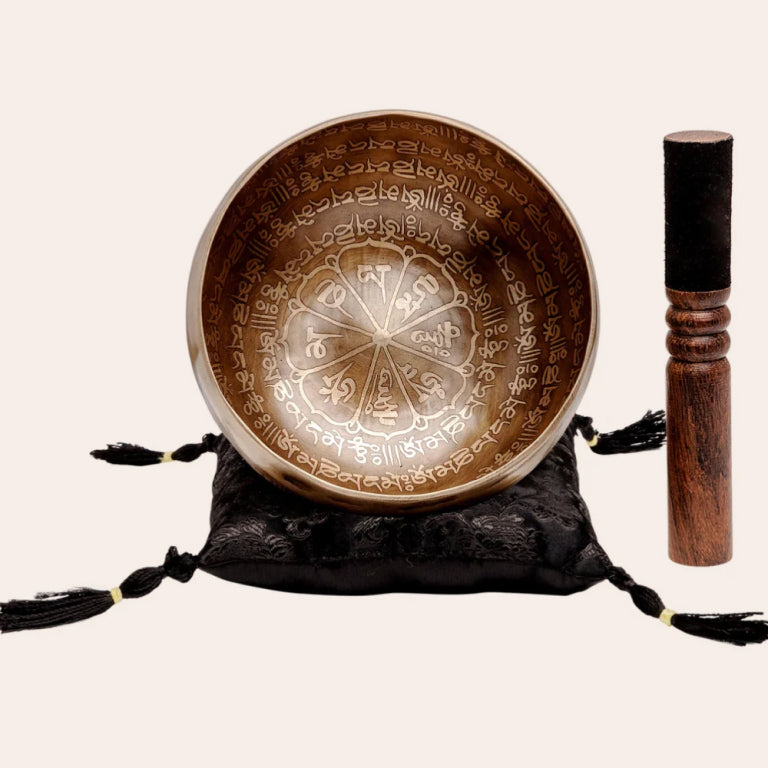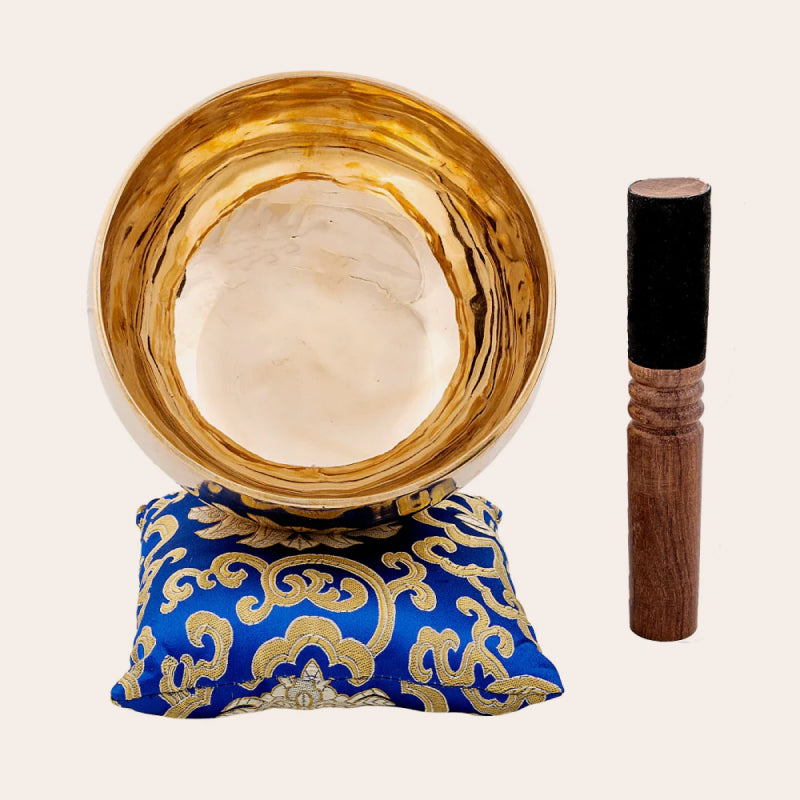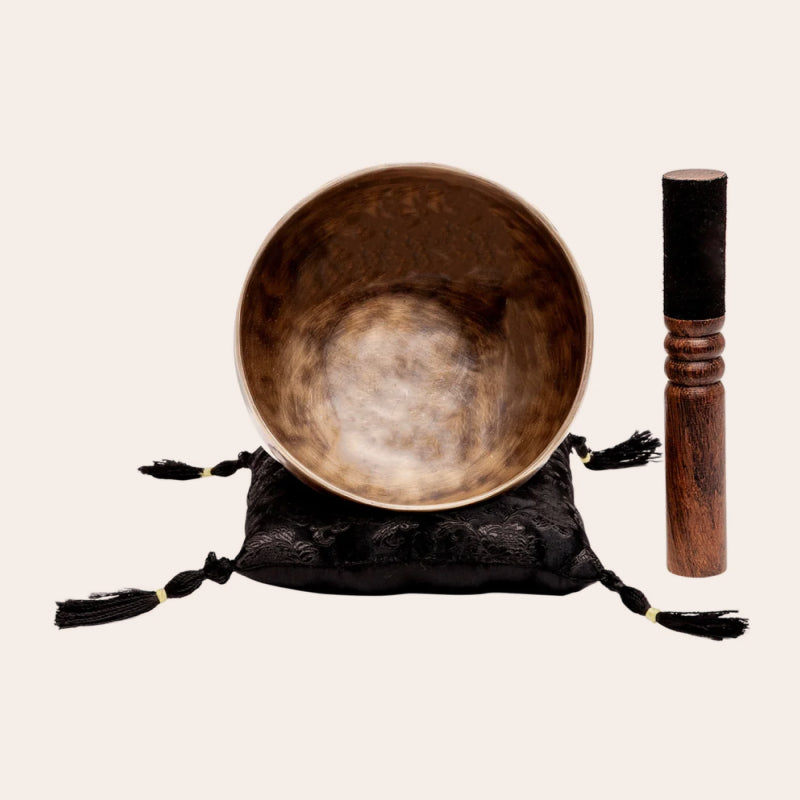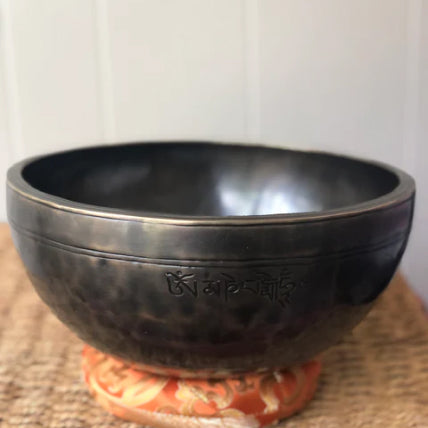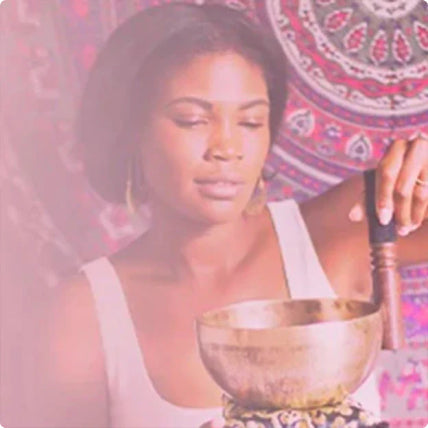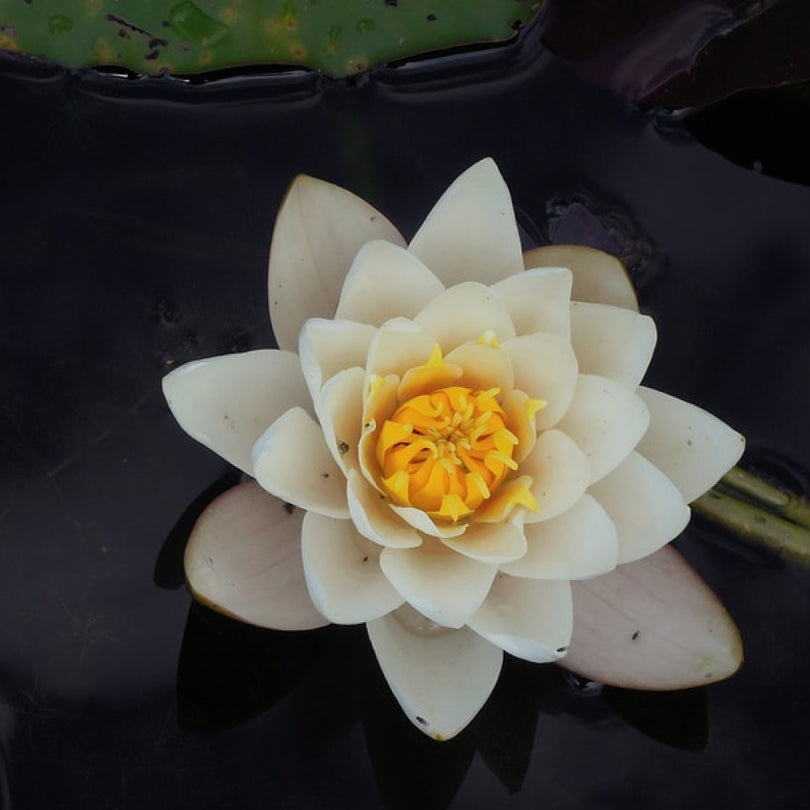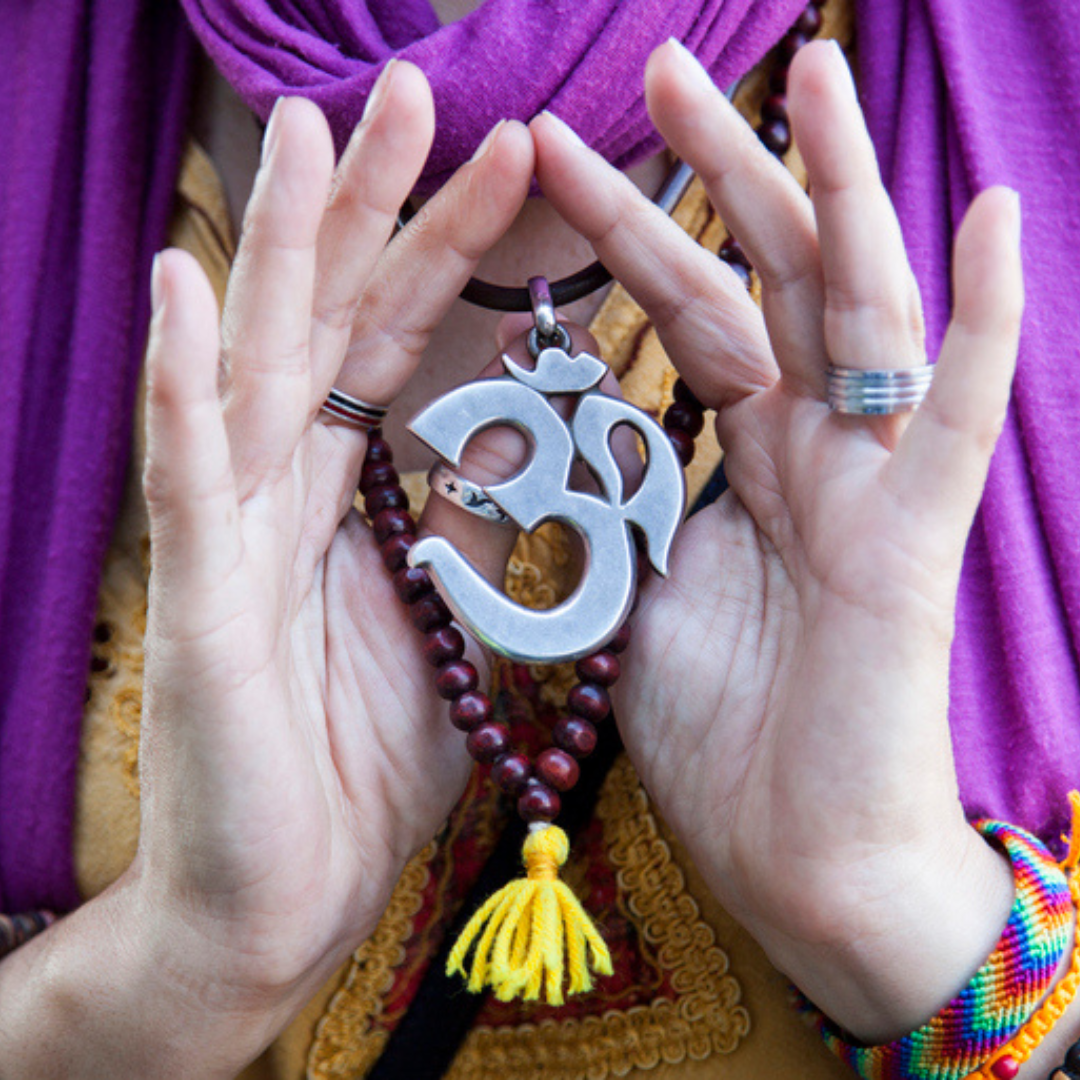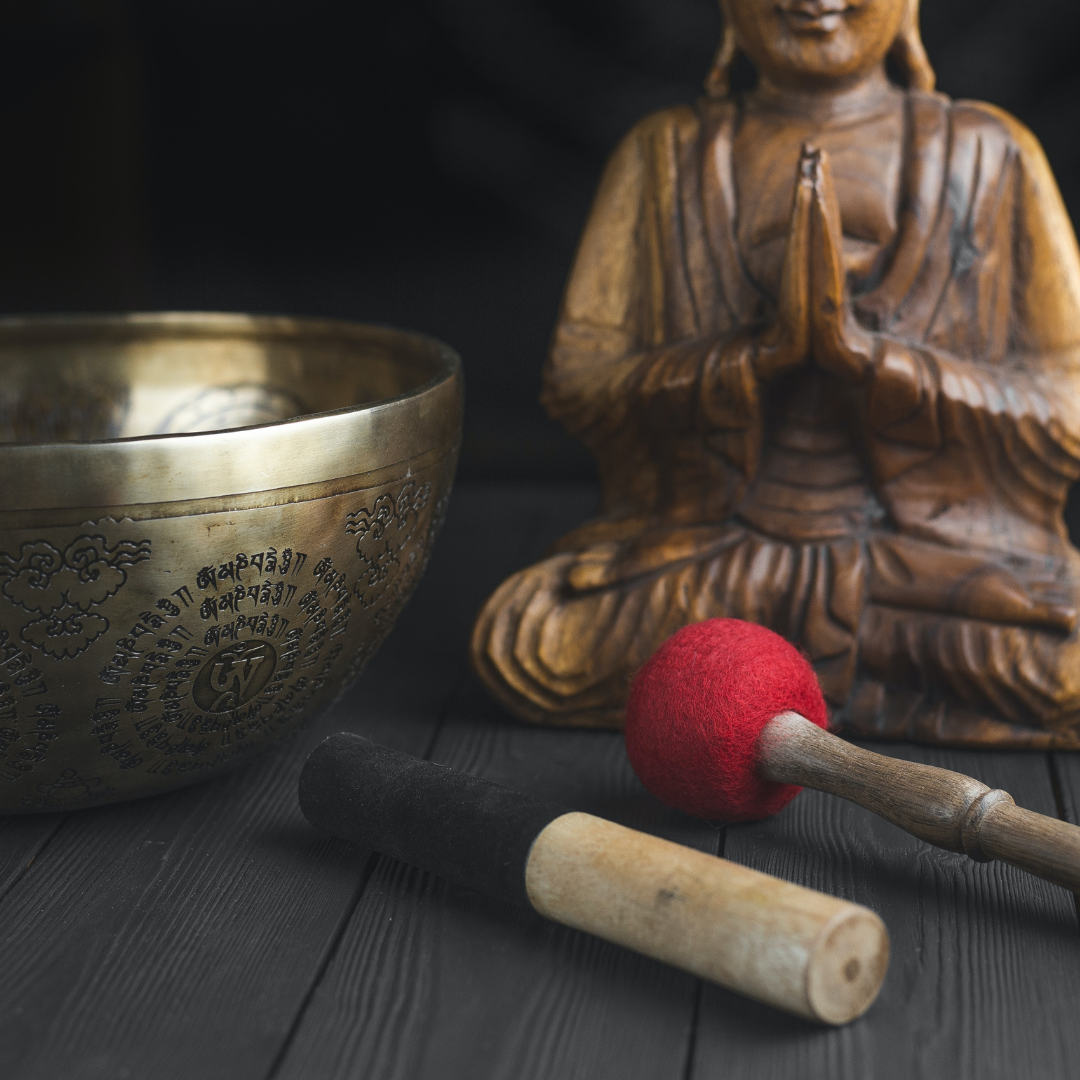OM: 10 Amazing Meanings, History, and Uses of The Sacred Syllable
Do you know chanting impacts your entire body? Not to say it doesn't affect the mind and soul, but physical effects are more visible, right?
If you've been to yoga classes, you're already acquainted with chanting OHM but perhaps not its meanings. Today we'll talk about its history, ten definitions, symbolic meanings, healing powers, and the right way to use it.
Let's chant!
Basics Of OM
Do you know the first and best chant most famous around the world? It's OM!
You might know this already; the sound of the creation of the universe or the big bang is believed to be OM.
Indic religions believe the first sound to emerge from the emptiness during creation was OHM. It's uttered before every mantra, chant, and religious ritual in Buddhism, Hinduism, and Jainism.
People around the world know it as OM, AUM, Omkara, Onkara, Pranava, Udgitha, Aksara, Am, Avam, and Ong, besides OHM. That may be why it's used in many places such as India, Tibet, Nepal, Thailand, Sri Lanka, Cambodia, China, Japan, South Korea, and the Maldives.
Meaning Of OM by cultures
Scientifically, the frequency of OM is 432 Hz, which is also called the music or pitch of the universe. But spiritually, chanting OM is meant to provide the reciter with personal power, enlightenment, and cosmic wisdom.
Let's find out its meanings throughout different religions.
There are two different meanings of OM in Buddhism, from Tibetan Buddhism and Japanese Buddhism.
In Tibetan Buddhism, we have already learned all about the meaning of OM through OM Mane Padme Hum, which means "jewel in the lotus." Technically, the verse refers to Buddha and the condensed form of Buddha's 84,000 universal doctrines and Om denotes oneness.
In a recent article on Tibetan Warrior Syllables, we also learned how important OM is in Tibetan meditation. According to Rinpoche's teachings we discussed, reciting OM continuously for a week or a month helps you achieve clarity and enter the element of light.
In Japanese Buddhism, OM is referred to as A-un or A-hum. It refers to the beginning and the end of the universe.
Scholars and psychics agree this is also a reference to the Christian belief of Alpha and the Omega. Interestingly, alpha and OMega are also the first and last letters in Greek alphabets.
Many Japanese scholars consider a-un as a breathing technique essential for prayer rituals.
By Hinduism, OM denotes the complete essence of Parabhrahman or Ultimate Reality or Consciousness. It's chanted via mantras like OM Shanti, Shanti, Shanti, and OM Shanti OM.
Another common use of OM in Hinduism is to worship God Siva like this- OM Namah Shivaya.
When it comes to Jainism, OM is the short form for revering the "Five Supreme Beings." These are- the Soul or Arihant, the Liberated or Ashiri, the Teacher or Acharya, the Guru Upajjyaya, and the Monk or Muni.
Sikhs utter a different spelling of OM, but their beliefs about the meaning are similar to other cultures. OM is called Ik Onkar, meaning OM Maker in Sikhism. It refers to the One God, the creator of time and space.
Interestingly, there's a western meaning and history of OM attributed to the English Occultist Aleister Crowley.
In his religion of Thelema, OM is spelled as AUMGN and pronounced with a silent "g" and a nasalized "n." Aleister Crowley defined OM as the breath of life or the combination of knowledge and generation.
Ten Meanings Of AUM To Understand It completely
Throughout different religions, the meaning of OM is diverse, varied, and vast. I'll describe it as briefly as possible so that you can meditate on these thoughts while you're chanting them.
|
By Time |
Past, Present, and Future |
|
By States of the Self |
Physical, Emotional, Spiritual, Universal Connection |
|
By Consciousness |
Waking, Dreaming, Deep Sleep (Subconscious), Ekatma (One with the self) |
|
By Knowledge |
A- Apti (obtaining), U- Utkarsa (Exaltation), M- Miti (Construction/ Annihilation), and fourth silent element- beyond the universe. |
|
By Gender |
Feminine, Masculine, the Neutral Gender |
|
By Light |
Agni (Fire), Vayu (Air), and Aditya (Sun) |
|
By Heat |
Breath, Fire, and Sun |
|
By Growth |
Food, Water, and Moon |
|
By Thought |
Buddhi (Intelligence), the combination of Buddhi and Manas (Intelligence + Heart), Citta (Cognition) |
|
By Gods |
A-Brahma, U- Vishnu, and M- Siva |
Meaning Of The Symbol OM
While a lot of people refer to the Sanskrit symbol for OM as two or three letters, the holy book of Hinduism- Bhagavat Gita refers to it as a single letter.
That just means it's a complicated topic.

The dot you see on top refers to Samadhi, which means spiritual bliss. It's defined as the highest consciousness or one's connection with the divine energy. The dot is the vibration that follows when you chant OM in pronunciation.
The crescent or semicircle you see above represents "Maya," which means illusion in Sanskrit. Scholars say it represents the materialistic obstacles you need to overcome to achieve enlightenment and purity of the self.
The top and bottom curves represent dream state and wakefulness, respectively.
The top represents the God Shiva and the bottom God Brahma.
The middle curve you see represents the state of unconsciousness or the God Vishnu.
By understanding the whole meaning of AUM, you'll find it easy to meditate upon these thoughts while chanting OHM during a singing bowl session.
Healing Properties Of OHM
Chanting is a therapeutic use of sound healing for entering the meditative state of theta brainwaves, as we learned recently.
Science says that repeatedly chanting OM opens your vocal cords to clear the sinuses. Chanting OM combines sound and vibration, leading to a better heart rate and improved blood pressure.
Simultaneously, your mind relaxes in the theta state, and stress vanishes. It can also reduce tension, negative thoughts, anxiety, and restlessness.
Read more about it in our article on five ways sound impacts our physiology, psychology, behavior, cognition, and spiritual awareness.
How To Use OM For Healing?
You know the meaning and benefits of OM by now.
Let's see how you can use it in your daily life.
Chanting is the best way to embrace the healing powers of OM.
You can chant it silently or aloud based on personal preferences. As for me, I chant it aloud when I'm alone and silently when I'm with others.
The second best way to use it is for powering up the energy of your affirmations.
Moreover, it will help you awaken the theta brainwave state for meditation and yoga in the same way too. When it comes to meditation and yoga, you can recite OM at the start, during the ritual, or even after you're done.
If you want to connect more with the magic of OM, wear jewelry with the symbol of OM engraved on it. I find it best for tuning manifestations via the sigil method.
Do you know OM is also the seed mantra of the two highest chakras of Third Eye and Crown? That's why you can easily tap into spirit communication, intuition, and other psychic abilities by chanting and listening to OM.
The last healing use of OM is listening to the sound healing vibrations of singing bowls. You can chant the mantra or simply listen to the sound bowl chanting it.
Now you know why singing bowls are called OHM bowls!
Start Chanting OM With OHM Bowls To Amplify Healing Energies
OM is matter, body, spirit, mind, and the universe. In short, AUM is everything. And that's not just from Buddhism, but several cultures and religions, as we learned above.
Chanting OM right after waking up helps me get my healing vibrations to start the day with maximum positivity.
I also prefer to use the Ancient OHM bowl to help me focus better during chanting affirmations, yoga, and meditation.
Do you know how to pronounce OM? Here's a video from Pronounce TV worth checking out if you're unsure how to chant it.
Feel free to share what OHM means to you with us!

